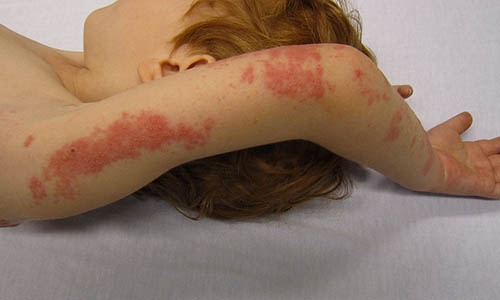1. Shingles is also known as zoster or herpes zoster.
• It is also known in many names such as Human herpes virus type 3, zoster virus or varicella virus.
2. Shingles is caused by the same virus in chicken pox infection.
• It belongs to herpesvirus species from herpesviridae taxonomic family (DNA viruses).
• The causative virus is Varicella zoster virus which only affects humans.
3. Shingles is the awakening state of the sleeping virus.
• Individual who have had chicken pox infection will retain the virus in its inactive form.
• Physiologic and environmental stresses can cause immune system suppression makes a person susceptible for reinfection with the same virus.
• This will trigger the reactivation of dormant virus from chicken pox infection before causing Shingles.
4. Shingles (herpes zoster) should not be mistaken with genital herpes virus.
• Herpes zoster and genital herpes are sometimes interchangeable when it comes to the names.
• Both are caused by herpesvirus.
• Herpes zoster is known as Human herpesvirus type 3.
• Genital herpes is known as Human herpesvirus type 1 and 2.
5. Shingles is less contagious than chicken pox.
• Unlike chicken pox which is highly contagious, Shingles is not an airborne disease.
• Shingles vaccine has shown effectiveness in the reduction of incidence of herpes zoster.
• The vaccine is composed of live attenuated varicella zoster virus administered subcutaneously in the upper arm.
6. Shingles may cause Ramsay Hunt syndrome.
• It comes in three neurological syndrome types, I (Ramsay Hunt cerebellar syndrome), II (geniculate ganglion reactivation) and III (Artisan’s palsy).
• The varicella virus may infect nerves in the head particularly the facial nerve near the inner ear cause irritation and inflammation of the nerve.
• It is characterized by a painful rash around the ear and may extend to ear canal, eardrum, tongue and roof of the mouth.
• May cause hearing loss on the affected side and feeling of vertigo.
• Drug of choice is steroids (prednisone) due to its anti-inflammatory effects
• Prognosis is poor if the nerve is severely damaged and may take several months for recovery.
• The chance of recovery is increased with prompt treatment usually 3 days following manifestation of symptoms.
• Children have a higher chance of recovery than adults
7. Shingles serious complications may persist for life.
• Postherpetic neuralgia occurs when the severely damaged nerve sends abnormal messages to the brain.
• This electrical signal is interpreted by the brain accordingly.
• Pain (excoriating) is conveyed from the abnormal signals which the patient may experience for long period of time maybe months, years or for a life time.
8. Shingles can cause loss of vision.
• Any ocular involvement in Shingles infection needs prompt medical attention.
• About 15% of Shingles cases develop ophthalmic zoster.
• Ophthalmic shingles (Herpes zoster ophthalmicus) is due to corneal nerve damage that causes perforation of the cornea making it prone to infection and associated complications and eventually vision loss.
9. Shingles during pregnancy won’t harm the unborn baby.
• Varicella virus is known to cause congenital problems in chicken pox infection.
• In shingles, the viruses remain inactive in the body from previous chicken pox infection.
• The virus doesn’t cross the placenta in pregnant women with shingles.
10. Breastfeeding is ok while the mother has Shingles.
• This is true provided that it is carried out on the unaffected breast.
• Some protective antibodies have passed across the placenta to the baby during pregnancy.
• This gives the baby a certain degree of protection for the first six months.
• Virus is spread through direct contact from the rash blister in shingles.
• If both breasts are affected, wait for lesions to be totally scabbed then continue with breast feeding, otherwise an alternative method can be used for providing the baby’s nutritional support.









Leave a Reply